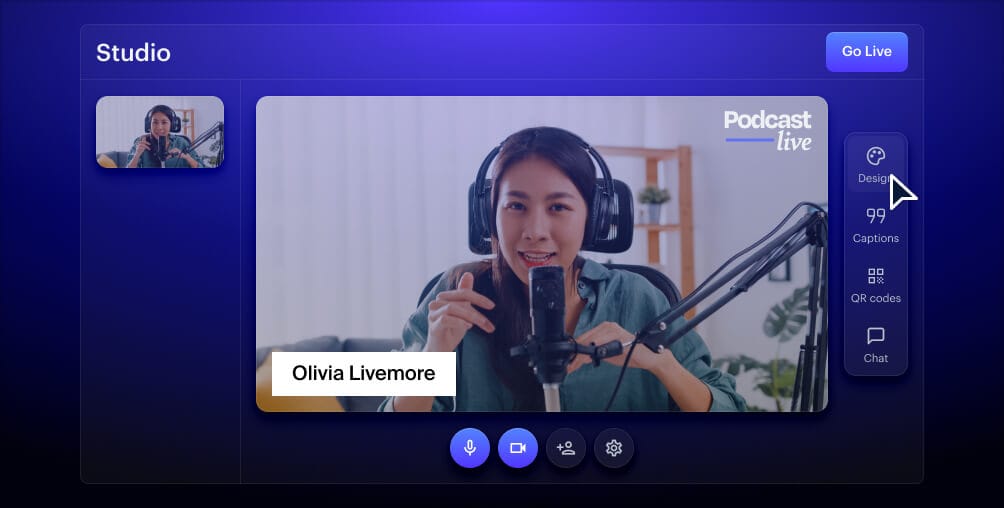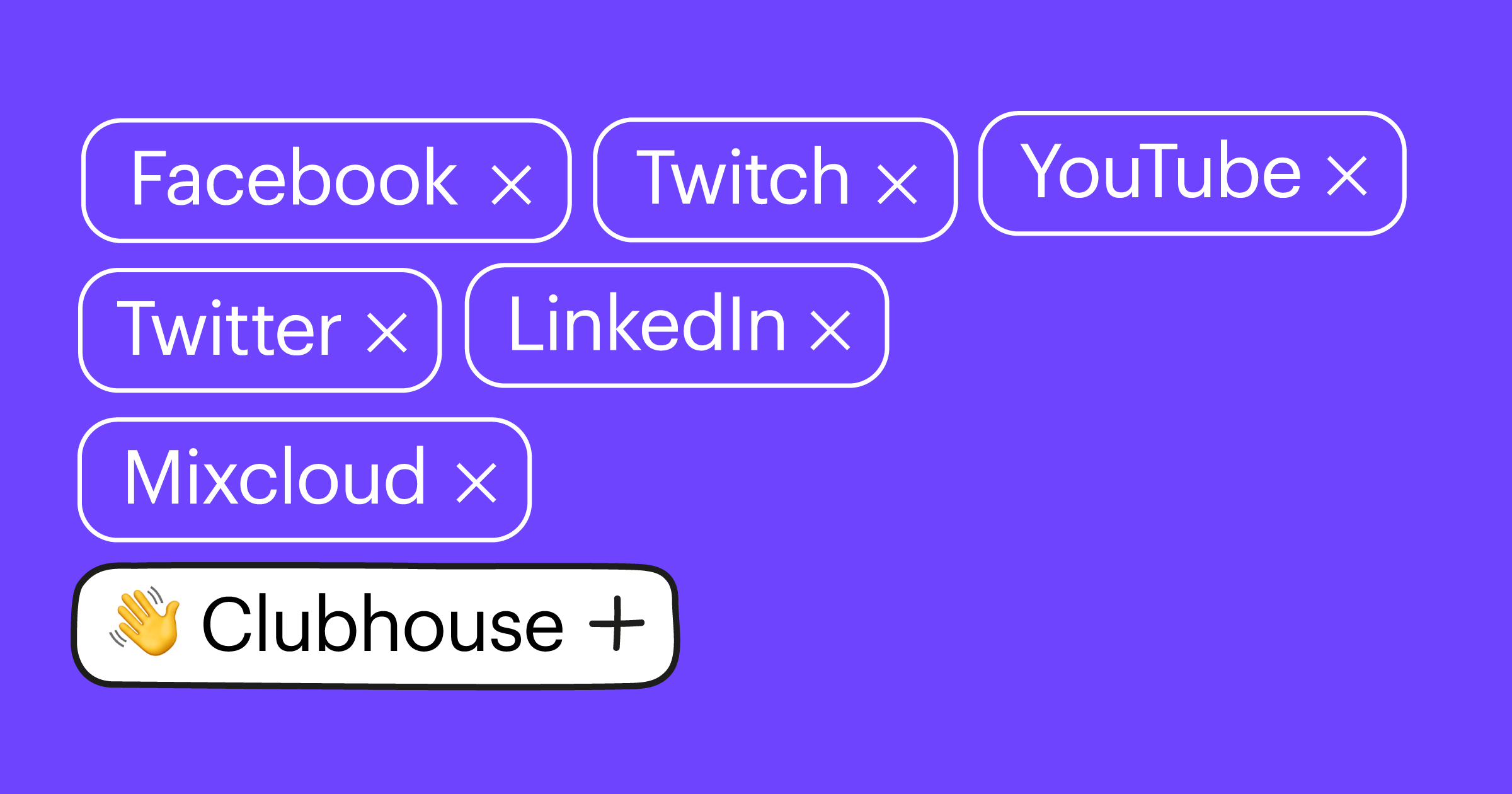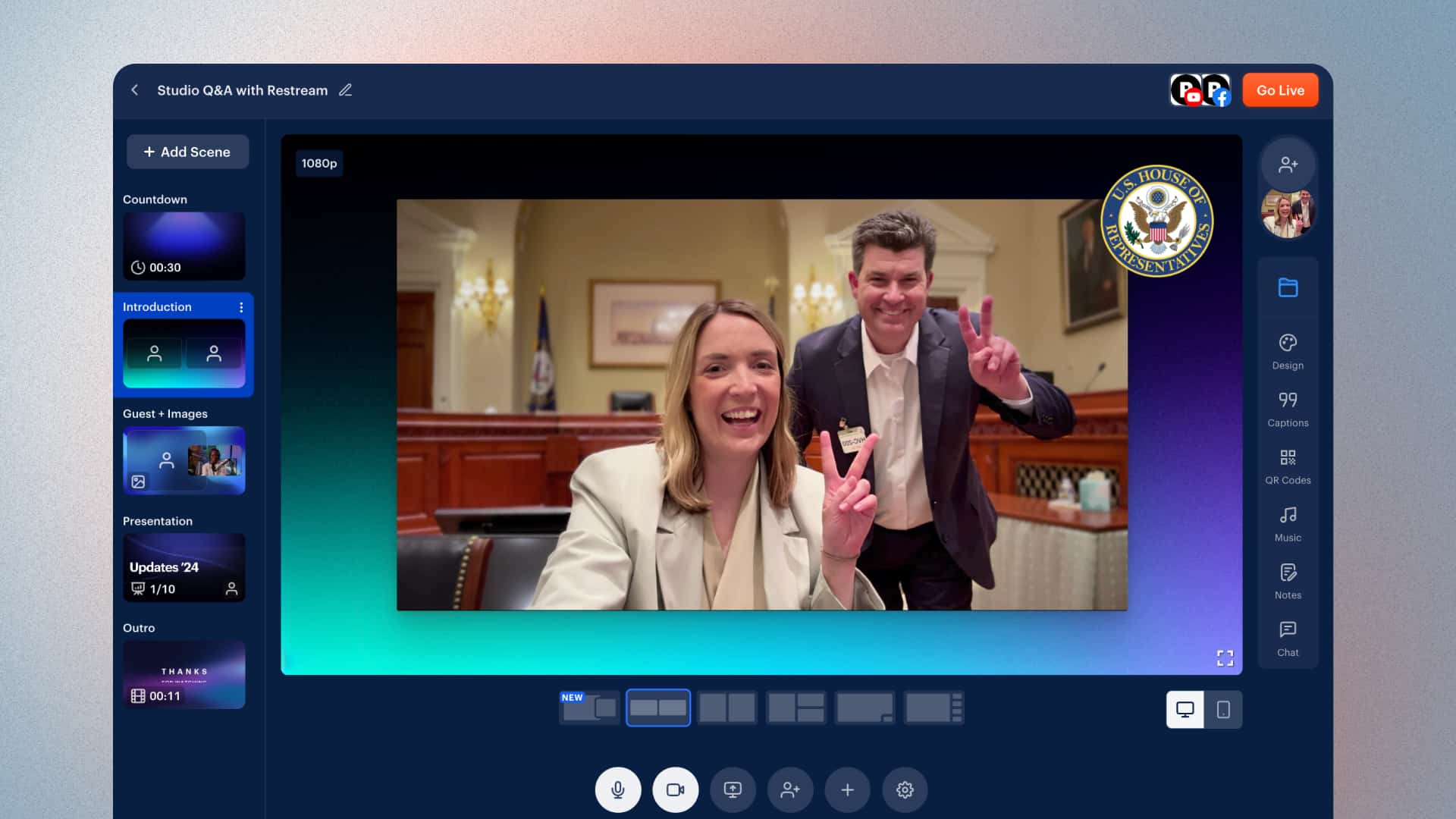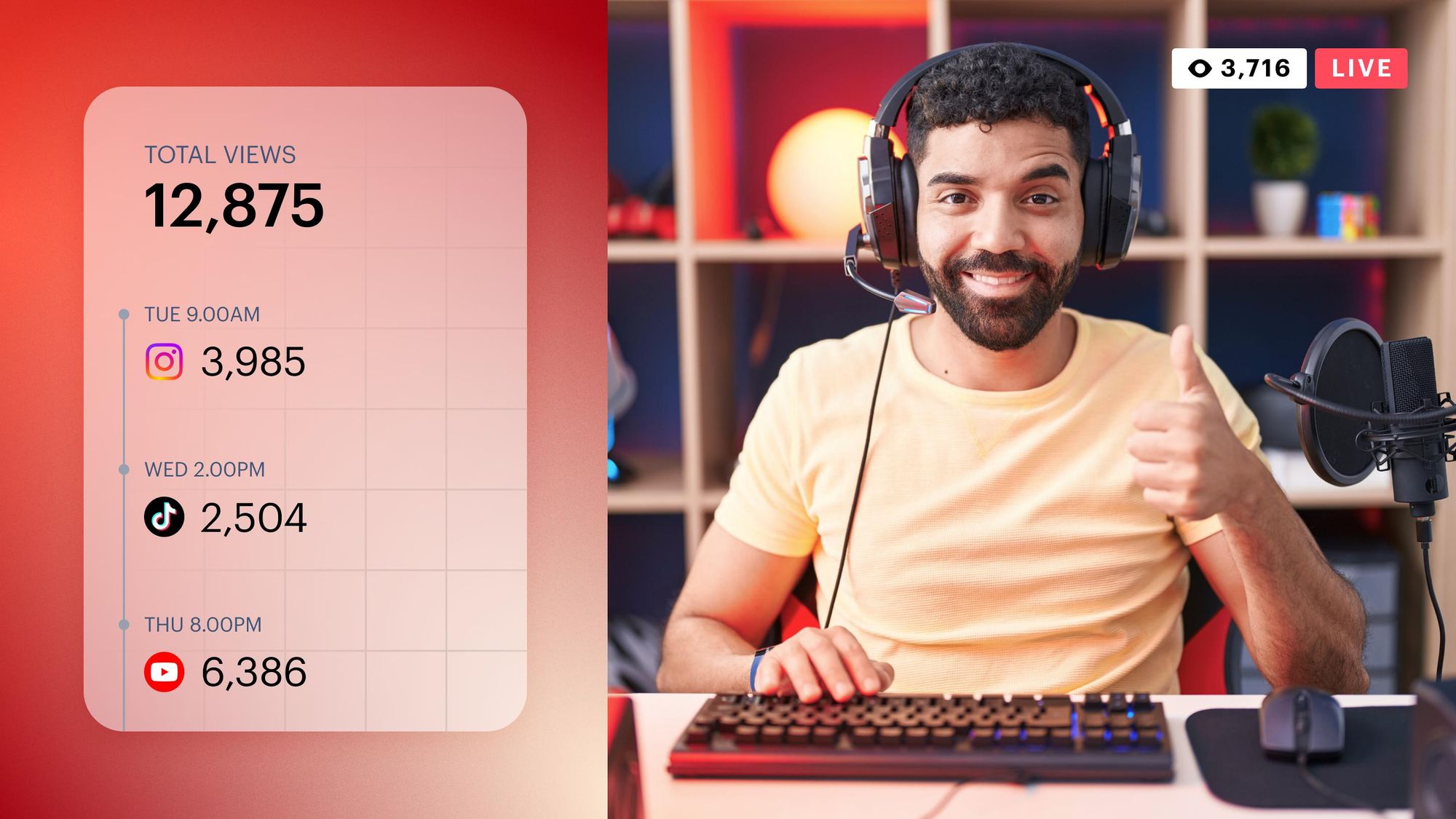Today, live streaming has already lost its status as groundbreaking tech and has transformed into one of the most popular forms of broadcasting. Top companies like Google, Microsoft, Nvidia, Apple, Amazon, and others have been benefiting from live streaming for years now. Not to mention the huge impact of COVID-19 on our society, which has led to a lot of people working and studying from home.
The history of live streaming is full of amazing, peculiar facts. The road to becoming one of the most notable broadcasting forms wasn’t easy at all. In fact, the huge success it has today came after long years of drought. So let’s dive into the exciting twists and twirls of the live streaming journey, which began back in the 1990s.
The early history of live streaming

People have always preferred live content to pre-recorded. We enjoy listening to our favorite radio stations, watching live TV shows, and going to concerts. But the world is changing very rapidly, and with that, new, fascinating technologies are being invented almost every day.
The Xerox PARC live stream
Believe it or not, the very first live streams took place in the time when people used to watch VHS cassettes on their CRT TV sets and connect to the internet via modems. Are you old enough to remember the annoying noises it produced? On June 24, 1993, a couple of computer scientists and engineers from a band called Severe Tire Damage performed their usual gig, when their colleagues at Xerox PARC in California decided to try out some new technology.
Live streaming was born before the “Facetube” era, and maybe, if it wasn’t for music, live streaming wouldn’t have even been invented. The guys from Xerox PARC broadcasted the gig over a niche network called Mbone (multicast backbone), which could be watched as far away as Australia. This was the very first instance of live streaming both audio and video. The band continued to live stream their shows, but only as private endeavors.
RealNetworks and baseball
In 1995, the internet company RealNetworks developed the first media player capable of live streaming — RealPlayer. Later that year, the company hosted the first public live stream. It was a broadcast of a baseball game between the New York Yankees and the Seattle Mariners. Live streaming still remained something of an experiment in terms of monetization and required more successful cases.
In 1997, RealNetworks launched RealVideo, one of the first programs to commercialize live video streaming. However, this occasion wasn’t enough for live streaming to blossom.
The “Third Way Politics in the Information Age” webcast
A few more years passed before live streaming really hit the titles. On November 8, 1999, the first-ever presidential webcast was held at George Washington University in Washington DC. It was produced by Excite@Home Network and the Democratic Leadership Council. The “Third Way Politics in the Information Age” webcast was the true birth of live streaming, thanks to Bill Clinton participating in the event.
The format of the event was basically an online discussion, during which the President and participants covered a range of delicate issues, including Medicare and gun control, via questions submitted by more than 50,000 online users logged in to the chat.
The rise of live streaming

It was YouTube that truly blew up the live streaming industry. And, in fact, people were sleeping on live streaming up until social media found ways to adopt and implement the technology in the 2010s. However, first things first. Live streaming still had a long road ahead.
In 2008, YouTube hosted its first live event, named YouTube Live. It was live streamed from San Francisco and Tokyo at the same time and featured interviews and performances from superstars like Katy Perry, Smosh, MythBusters, and Bo Burnham. Although the live event was considered successful, something was still off.
YouTube didn’t become a specialized live streaming platform, hosting only occasional live broadcasts here and there. The most notable ones were a U2 concert in 2009 and a live Q&A session with Barack Obama in 2010. Shortly afterward, the company started the development of its own live streaming technology.
Arguably, YouTube was too slow to push its streams to the market as other companies managed to take advantage of it. In 2011, Twitch.tv (formerly known as Justin.tv) launched a new streaming platform designed for video games. Back then, it didn’t seem obvious that this idea was even remotely profitable. However, just two years later, Twitch had more than 45 million viewers per month!

Twitch’s success was yet another turning point in the history of live streaming. YouTube quickly adapted their live streaming policy, and by the end of 2013, any registered user could live stream on YouTube. Other social media couldn’t miss this party and quickly hopped on the live streaming train. Starting from 2014, content creators could broadcast their live videos to multiple platforms at the same time thanks to Restream.io. In 2015, Twitter acquired the live streaming application Periscope. And later, in 2016, both Facebook and Instagram presented their live streaming services as well.

The modern era of live streaming
Ever since social media incorporated live streaming technology, it’s been on a continuous and stable rise. By 2018, more than 3.5 million live streams were hosted on Facebook! And by the end of 2019, users all over the world watched more than 1.1 billion hours of live videos! The numbers can’t lie — live streaming is dominating more and more each day.
Today, live streaming is one of the most prominent forms of marketing, communication, and entertainment. And modern times require modern solutions. That’s where Restream.io comes into play. The service allows for live streaming simultaneously to multiple platforms, including YouTube Live, Facebook Live, Twitch, X (Twitter), LinkedIn, and many more.
And in 2020, the company released Restream Studio — a simple yet powerful live streaming tool that allows users to multistream directly from their browsers, invite guests on streams, read and reply to viewers’ messages from different platforms in one place, etc. With Restream Studio, anyone can easily create professional live streams and truly maximize their audience reach in a matter of just a few clicks.

Create stunning live videos
Restream Studio is the easiest way to create high-quality live videos on multiple platforms at once. It's user-friendly and offers an engaging viewer experience.
In the year 2020, the world faced something it has never faced before, something petrifying — the global COVID-19 pandemic. Although the whole global economy received a stunning blow, live streaming, on the contrary, encountered new opportunities. Because of the lockdowns all over the world, many people were forced to work from their homes, and in the fall of 2020, as many as 52% of students attended school virtually.
Why live streaming became so popular
When it comes to live streaming and the reasons behind its incredible popularity, one of the most important is the ability to engage with thousands of people across the globe in real time. Streamers can communicate with their viewers via live chat and make their streams truly interactive and interesting to watch.
Another crucial reason that brought live streaming to fame is its cost-efficiency. Unlike TV broadcasts, you don’t have to pay for your live stream to be shown. Moreover, live streams can be way less expensive in terms of production. Such cost-efficiency attracts not only individual streamers but also many businesses all over the world — not to mention the ability to easily monetize live streams.
Finally, considering the regulations regarding the recent pandemic, live streaming allows people to stay connected while staying at home. The technology has already helped a lot in global attempts to stop the coronavirus from spreading.
Future predictions and final thoughts
Between April 2019 and April 2020, the live streaming market experienced a 99% growth in hours watched. And given the lockdowns that have continued ever since, this growth has remained steady. There are no apparent reasons for live streaming to stop growing in the foreseeable future. The global live streaming market is expected to reach more than $180 billion by 2027, according to Grand View Research.
Presumably, Twitch, YouTube, Facebook, Instagram, LinkedIn, and X (Twitter) will remain the biggest players in the global game. Smaller streaming platforms like Trovo, Picarto, and Mixcloud will continue to attract specific audiences, slowly but surely grow, and develop their services.
Top social media companies are monopolizing internet communication, and live streaming is no exception. The internet continues to grow, and live streaming is growing with it. Regardless, video games will keep the live streaming industry safe and sound even if all other segments fail to live up to expectations.
Most people desire to see things happening here and now. Live content has always been spicier. And live streaming is simply the natural evolution of the very same technology that took its roots back in the early 1900s with the first radio broadcasts. We can only guess how live streaming will transform in the future, but it surely will live.







